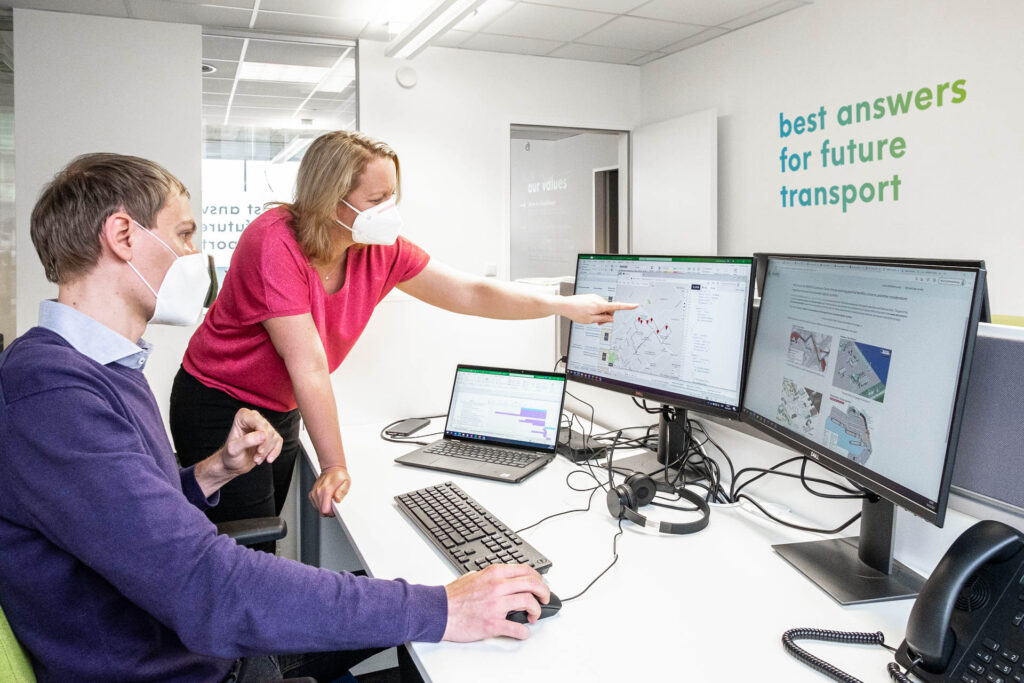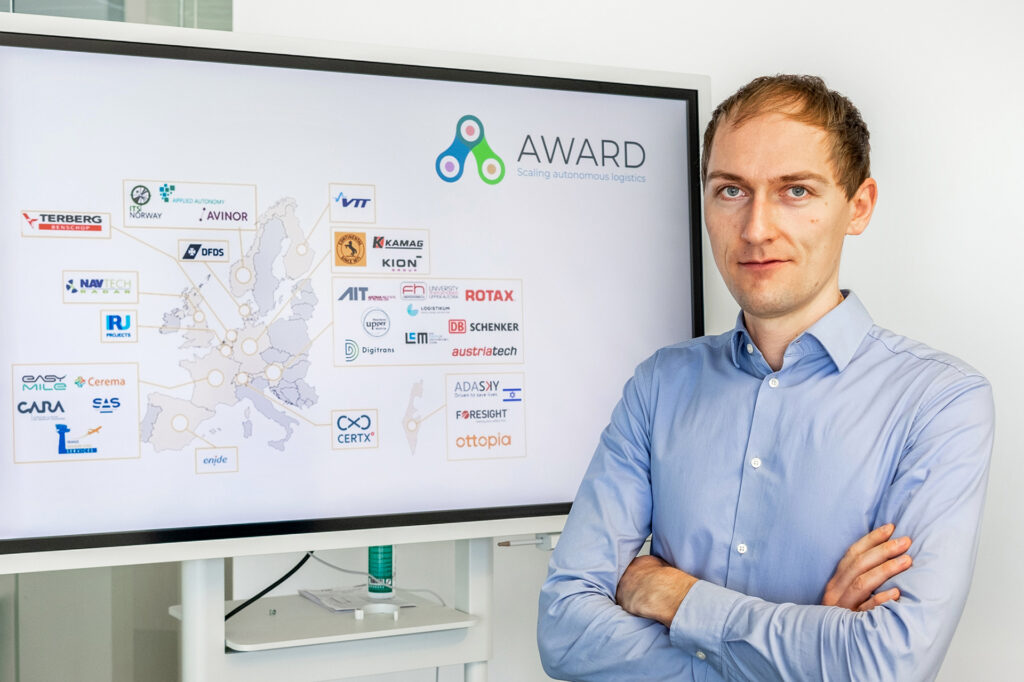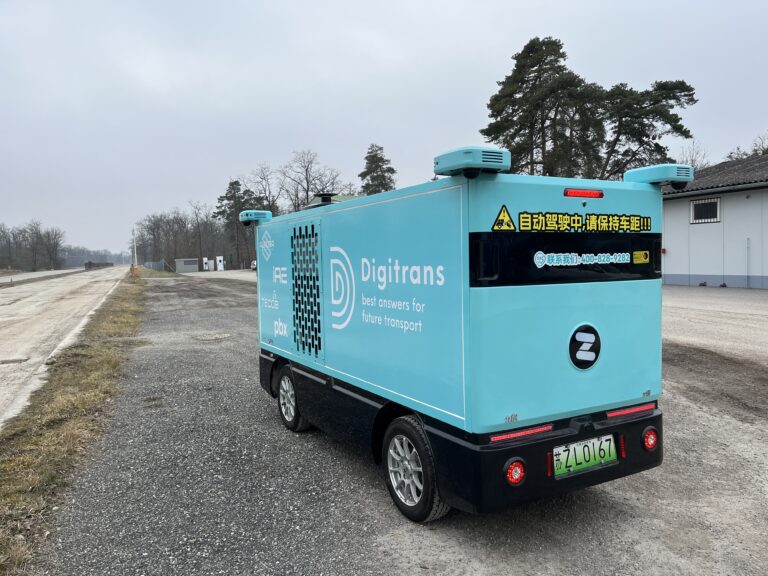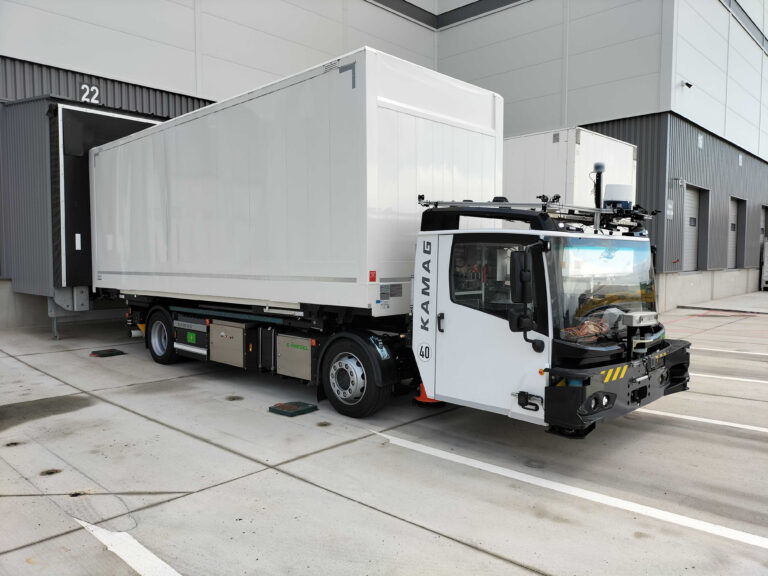On the Way to Automated Freight Transport - Insights on Project AWARD by Digitrans Project Manager Hannes Watzinger
At the beginning of January 2021, the EU project AWARD (All Weather Autonomous Real logistics operations and Demonstrations) was launched at a kick-off meeting with more than 160 participants from various EU countries.
Digitrans was able to attract 2.85 million euros in funding from the European Union to Austria to test the promising technology of automated freight transport under real everyday conditions on a public transport section between the two companies DB Schenker and BRP-Rotax in Upper Austria.
In the meantime, about a year has passed since the project start of AWARD.
Time to review the progress of the project.
Automated freight transport does not happen overnight
An exciting project year with many different challenges lies behind us. There was still a lot of preparation work to be done by everyone involved. In the first work packages, for example, the detailed system scope and requirements for the automated freight transport use case were specified and the needs and requirements of the end users were identified.
“Such a project clearly involves a lot of organizational effort,” says Hannes Watzinger – Project Manager for the AWARD project at Digitrans. “A fully autonomous transport shuttle does not run overnight. It is a complex process that has very rarely been rolled out in public road transport.”

Hannes Watzinger and Digitrans CEO Eva Tatschl-Unterberger at work with full commitment. © DigiTrans GmbH
On the way to automated freight transport - hub-to-hub
This year, the right path has already been taken to test automated hub-to-hub freight transport in Upper Austria for the first time on a public road section. Preliminary work, such as upgrading the infrastructure of the planned traffic lights with intelligent C-ITS communication and developing the sensor system for the automated vehicle, has already been initiated.
Development of the automated basic vehicle of the company KAMAG for automated freight transport
The construction of the basic vehicle of the company KAMAG is progressing. The prototype based on a Kamag ePM will soon be ready to drive and “drive-by-wire”, i.e. controllable by software. The sensor technology and the “Drive Pilot” are about to be installed.
This will make it possible to test the automated driving functions of KAMAG’s electric truck under the supervision of a safety driver. In 2022, numerous integration and compatibility tests are still on the agenda before the vehicle is excitedly awaited at the Digitrans proving ground in St. Valentin (Austria). Then it will be a time for testing, testing, testing.
Automated freight transport in all weathers – construction of the rain plant on the Digitrans proving ground
Before the automated vehicle with safety driver can be approved for public road traffic, it must prove its roadworthiness – especially under difficult weather conditions such as rain, fog or snow.
“For this purpose, we have set up an outdoor rain plant, unique in Europe, on our proving ground in St. Valentin. It will be available for the first test drives from summer 2022,” explains Hannes Watzinger.
Initial sensor tests – automated tow tractor TractEasy at the Digitrans proving ground in St. Valentin
As part of the AWARD (All Weather Autonomous Real logistics operations and Demonstrations) project, sensor tests were carried out with driverless technology solution provider EasyMile’s TractEasy vehicle on the Digitrans proving ground in Austria.
Individual sensors were extensively tested under adverse weather conditions. The time of year was ideal for this with rain and snow providing challenging scenarios. Tests like these are a key part of the continued evolution of autonomous driving at scale.
What is special about the AWARD H2020 project
Particularly exciting, says Hannes, is the collaboration with the many different experts at the international level. A total of 29 partners from 12 nations are involved in the project.
Of course, with so many people involved, project coordination is a mega-challenge. In order to be able to master all this, one is dependent on the cooperation of all project participants.
Only together can the newly acquired knowledge be used in the best possible way for the automated freight transport use case and the existing know-how be continuously developed. “We learn a lot of new things here ourselves every day,” Hannes describes. “That’s exactly what’s so exciting about this project.”

Hannes Watzinger next to the map with the total of 29 AWARD project partners. © DigiTrans GmbH
About the AWARD project - Hub-to-Hub Use Case for Automated Freight Transport
In a practice-related use case in Upper Austria, the two companies BRP-Rotax and the freight forwarder DB SCHENKER, as well as the project partners AIT, the Logistikum of the Upper Austrian University of Applied Sciences, LCM, and AustriaTech, are researching and gathering experience on a public traffic section with an automated transport vehicle for a hub-to-hub logistics application that is suitable for everyday use and independent of weather conditions in order to make automated freight transport a reality.
On a route of about 600 m, where a conventional truck normally runs every day, a driverless electric truck with test approval is to run hub-to-hub between the companies by 2023 – regardless of whether it is raining, snowing, sunny or foggy.
Further information and links
> More information about AWARD – Project Website
> More info about the Hub-to-Hub Use Case
The content of this website reflects only the author’s view. Neither the European Commission nor the INEA are responsible for any use that may be made of the information it contains.
You might also be interested in
Further Insights

AURORA project: Revolutionizing refrigerated logistics through autonomous transport technologies
The vehicle is equipped with the latest technology and is already able to drive most of its journey independently. It can be used both as a passenger and goods transporter.

AWARD H2020 – Start of test operation for automated freight transport in Gunskirchen, Upper Austria
Start of the test phase in public transport in Gunskirchen. On the approximately 600m long route between the two companies BRP-Rotax and the freight forwarder DB Schenker Austria, an automated electric truck with test approval will be tested in real operation from June 12, 2023.

Sustainable development through automated freight mobility
In the future, automated freight mobility and autonomous vehicles will be the key to being able to implement more environmentally friendly concepts for traffic and freight transport. The new technologies offer numerous opportunities for the sustainable development…


